How to Get Featured on Forbes – The Ultimate Guide

This strategy is not ideal for all people, and most do not qualify.
It’s designed for successful entrepreneurs – 7-figure (or higher) earners – who want to tell their story and share their expertise in huge magazines such as Forbes, Inc., Time, Fortune, Business Insider and others of equal caliber
While those prestigious publications may seem out of reach, we’ve used this exact strategy to get our clients featured in their dream magazines. Here’s a snapshot of the magic we created for some of them:
If you want to get featured in Forbes, Inc. and other heavyweight publications, then drop everything and pay attention. THIS is the right way to do it.
There are 3 main ways to get yourself into one of these respected publications.
- Pitch Your Story: Have an awesome story and pitch it to people who write for these publications.
- Become A Contributor: Start writing for these publications yourself, and write about topics that interest you, occasionally mentioning yourself.
- The Easy Way: Simply tell us your story and we will help get you featured by pitching you to writers in your niche.
We will address all three of these approaches.
We Do It For You
Table of Contents
What Is Forbes And Why Should You Get Featured There?
Why Can Being Featured Propel Your Online Business?
What Are The Different Ways To Get Featured?
How To Pitch Your Story And/Or Become A Contributor On Your Dream Publication
3-Step Framework To Getting Published On Forbes Using Cold Email
Step 2: Find The Right Editor Or Journalist To Pitch
Step 3: Prepare Your Outreach Campaign
5 Steps To Write A Cold Email That Gets A Reply
Step 1: Know Your Contacts Like The Back Of Your Hand
Step 2: Write An Irresistible Subject Line
Step 3: Hook Your Journalist With A Catchy Opening
Step 4: Write An Astounding Email Body
Step 5: Make Your Ask Crystal Clear
How To Use Twitter And HARO To Get A Reporter To Write About You
How To Make The Most Out Of HARO
How To Use Twitter To Pitch Journalists And Reporters
Let’s Tell Your Story: Here’s How We Can Help You To Get You Featured On Forbes, or Inc.
Wrap-up: You Have Everything You Need To Get Featured In Your Favorite Publication
What Is Forbes and Why Should You Get Featured There?
Before we dive into the actual work, I will point out that we’re going to focus entirely on Forbes in this guide. The same strategy works for virtually any big publication but Forbes is the granddaddy of positive exposure… and I can’t be bothered typing multiple names every time.
Let’s dive in!
Forbes is a news outlet, media company, and publication started more than a century ago.
Aside from its position as a stronghold of the paper media market, it’s now one of the most-read websites in the world. It attracts around 100M visitors a month, according to Similarweb.com
While Forbes’ annual paper magazine is written by professional journalists and writers, Forbes.com leverages a network of contributors who write and publish articles directly on the website. These articles range from compelling stories to interviews and business cases.
“Contributors are paid based on traffic to their respective pages; the site has received contributions from over 2,500 individuals, and some contributors have earned over US$100,000”, according to the company.

Most readers are from the US (60%), mostly around 25-30 years old, all curious to learn more about entrepreneurship and to read success stories. Forbes knows its audience, as evidenced by the instantly recognizable “30 Under 30” editions, spotlighting best-in-class young entrepreneurs.

Outside of content for that specific demographic, the site mainly covers topics around capitalism and entrepreneurship: the richest people in the world, the most successful entrepreneurs in each country, and so on.
Forbes.com employs the slogan “Home Page for the World’s Business Leaders” and claimed, in 2006, to be the world’s most widely visited business website.
Why Can Being Featured Propel Your Online Business?
If you don’t know why being featured in Forbes will supercharge your business, you shouldn’t be in business.
Seriously, getting your face on the front cover or even just your name in one of their articles is guaranteed social proof.
It takes your personal brand from 10 to 100.
But the thing is, you have to start now. I’ll walk you through three POWERFUL methods to get published and begin your rise to global recognition
What Are The Different Ways To Get Featured?
There are multiple ways you can get your content and/or story published, but the best are:
- Forbes “30 Under 30”
- Cover article – success story
- Become a contributor
- Original content, published on a regular basis
- Press Release through a PR agency
However, the easiest way to get featured is to get someone to write about you, and to do that you need a great story and PR contacts.
We can connect you with writers that will have the potential to write about you.
But you can also become a contributor and write about yourself and other people.
Let’s dig in!
Side Note:
This is a long, detailed guide. If you’re short on time and would rather focus on growing your business, find a trusted partner who gets results to handle this for you.
You’re in the right place. We’re a PR agency. We’ve helped a lot of successful coaches, entrepreneurs, and consultants just like yourself to get featured in their dream publications, no matter how hard it looks to achieve. We can help you too.
How To Pitch Your Story And/Or Become A Contributor On Your Dream Publication
3-Step Framework To Getting Published On Forbes Using Cold Email
- Collect as many publications as you can
- Hire a few freelance writers to ghostwrite some content for you
- Use an email CRM tool
- Boom! You nailed it
Step 1: Know What They Want
In a recent study, JustReachOut found that journalists prefer exclusive research and emotional stories.
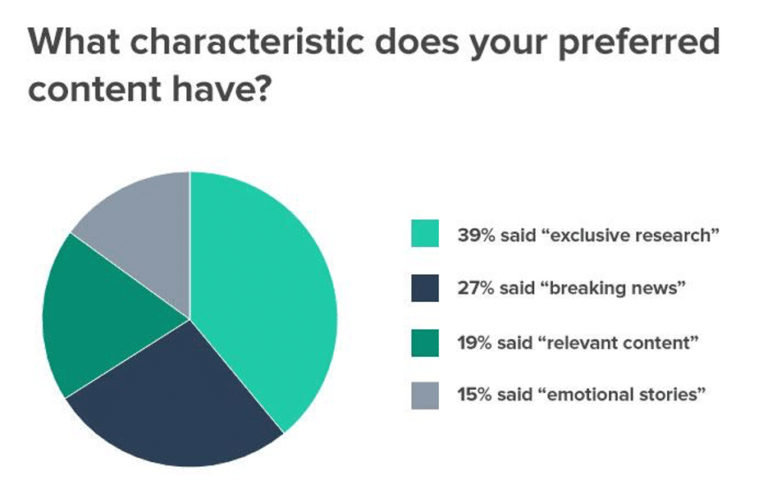
Simply put, leading journalists are constantly hunting for exclusive research and emotional stories.
And it’s totally true. You’re writing for an audience that’s largely made up of entrepreneurs who want to consume this type of content. They want to know that someone just like them can succeed, despite the challenges.
Use that if you want them to cover your story. You’ve built your own company, you’ve overcome a TON of hurdles and problems. You’ve lived it and only you can share it.
If your aim is to be a long-term contributor, attention-grabbing topic ideas aren’t hard to find, but to really stand out with strong content you can either:
1 Reverse engineer your competitors. What I mean by that is find two or three contributors to Forbes who write about your niche and look at the content they publish. Try to model them by reading some of their content. Try to find the missing pieces of the puzzles they outline.
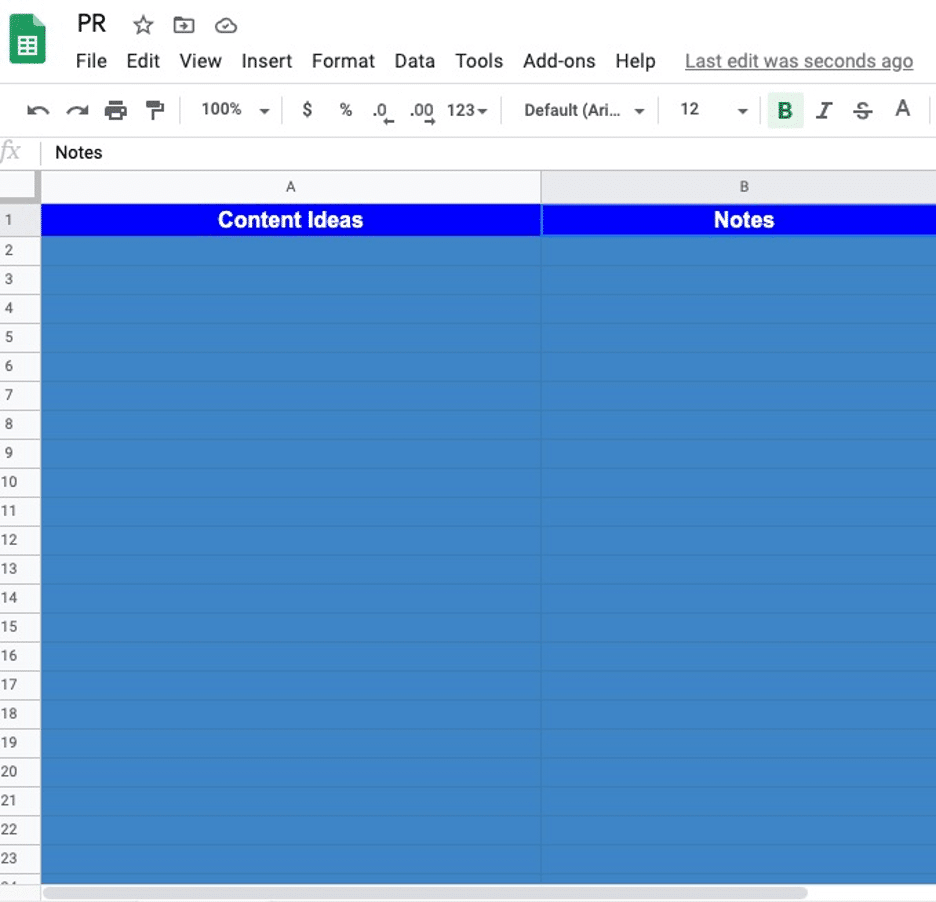
Don’t forget to google your shortlisted ideas, to make sure someone else hasn’t covered them first. And if they have, you could always reverse engineer what they wrote!
These two approaches are more than enough to find content ideas to pitch to journalists.
Key takeaway: Pick a few contributors in your niche and some journalists who cover your industry, read some of their content, and focus on finding some missing points. Or survey your audience, and connect the dots to come up with a unique list of ideas.
Now, let’s find the journalist…
Step 2: Find The Right Editor Or Journalist To Pitch
Journalists want you to collaborate with them, not just send them a random email with an attached document, hoping that they’ll publish it. Don’t jump in at the deep end and drown: pitch content ideas first.
Pro tip: Be very picky with the journalists and editors you’re going to pitch. Seriously, you don’t want to pitch your business’s rags-to-riches story to the first contact you find then discover they work in the foreign politics department. They won’t care. Pick someone who’s inherently interested in what you have to share.
Remember that saying: Work smarter and not harder?
The same principle can be applied to finding journalists’ emails. However, as you might expect, the “smarter” option costs significantly more than the “harder” option. You can either:
- Use paid tools to find emails quickly and easily, or
- Take the extra time to find them manually.
Let’s explore the two options:
How To Combine Search, Data, And Engagement Tools To Find Emails Quickly
ANewsTip is like a search engine where you can find the names and emails of journalists who’ve written about a given keyword or topic:
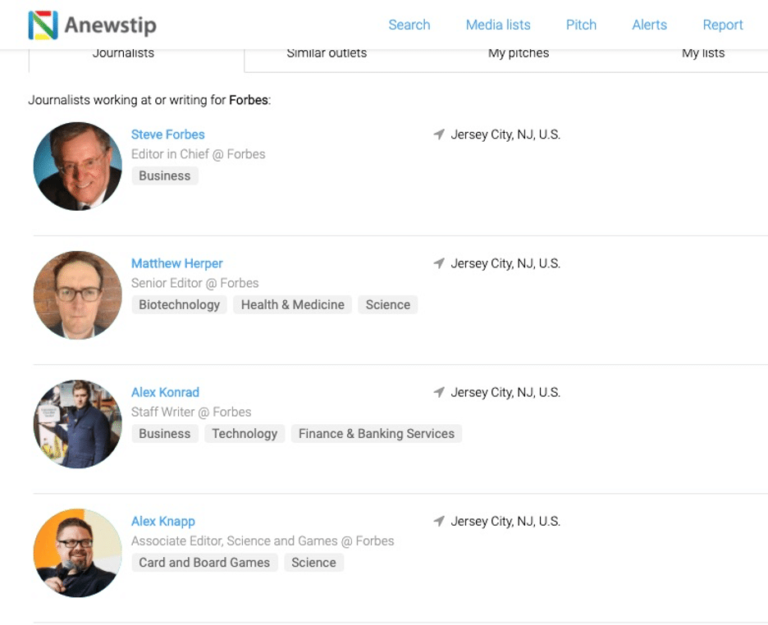
It can also help you find all the departments of your targeted publication:
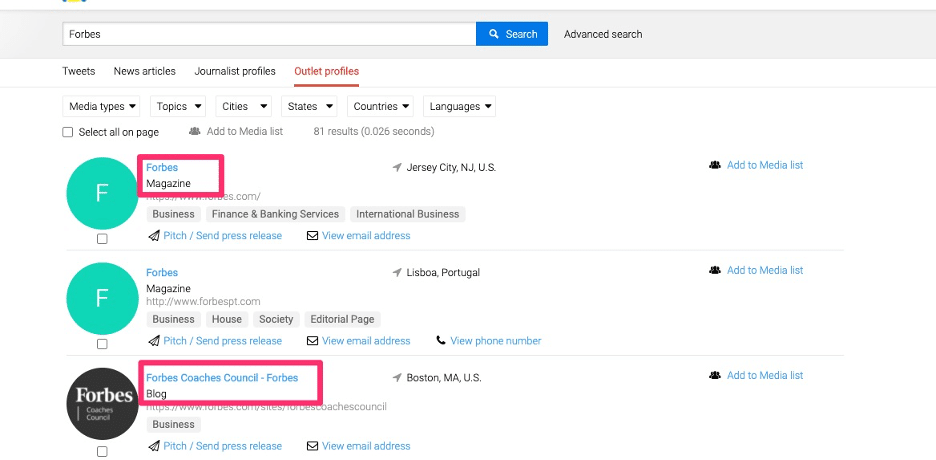
This is a very helpful tool for our case. It’s a mid-price tool but is totally worth it if you’re short on time and want to find details very quickly.
Other tools that do the same job as ANewsTip:
- JustReachOut
- HeyPress
- MuckRack
At the top end of the range is another powerful set of tools, including Cision.
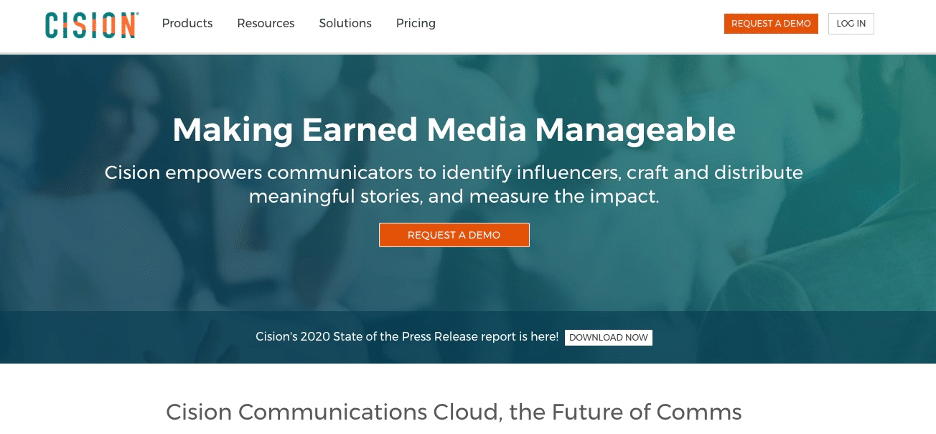
Cision is like a city of journalists’ data. You can access a repository of more than 1.6 million emails for journalists and bloggers and over a billion outlets, including our targets and probably your local newspaper, too.
Cision is quite expensive. However, it’s worth it if you have the budget to build a powerful PR campaign quickly.
These are also similar tools to Cision. Review what they offer and choose the best one for your particular needs:
If you’d rather save money (or don’t have the budget), you can hunt emails manually.
How To Use Email Lookup Tools To Find Journalists’ Emails
These tools demand a lot of work and patience. You’ll need to either search with the publications’s URL manually or organize multiple URLs in a spreadsheet and upload it.
One of the most popular tools for manual searches is Hunter.io:
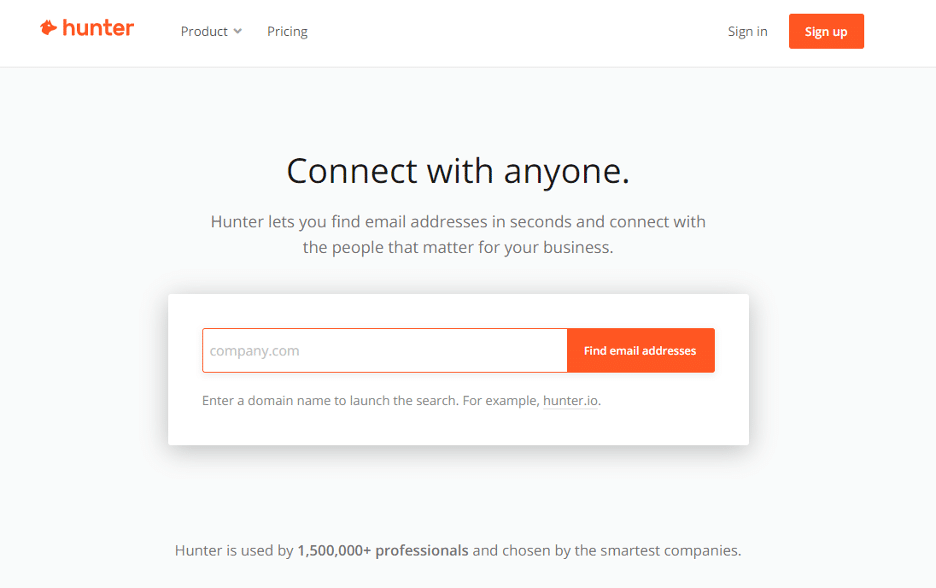
They have a free trial, but their paid plans are better. Once you log in, you’ll see this:
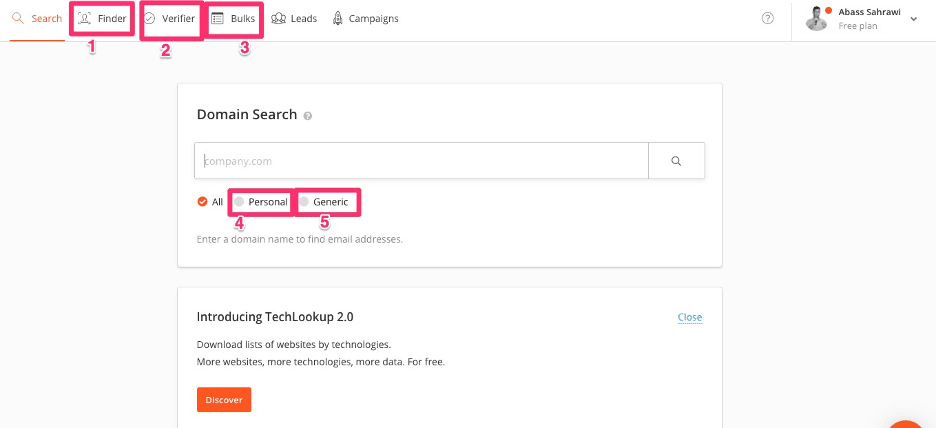
- Finder: This is where you can find emails by entering publication URLs individually
- Verifier: Once you find emails, you can verify that they’re working
- Bulks: You can upload a spreadsheet that contains multiple URLs
- Personal: A better option if you know the journalist’s name and just need their email.
- General: This is good for a general overview of an organisation’s entire list of emails, from support to journalists to writers.
There are, of course, alternatives:
As I’ve already mentioned, these tools are time-consuming. If you’re not willing to invest in the high-end options, a better way to use the manual tools is to do an SOP, hire a VA and have them do the job for you.
Now you’ve done the groundwork of finding the right contact, let’s get ready for the fun part!
Step 3: Prepare Your Outreach Campaign
By now, I assume that you have the following:
- A list of your target outlets: Forbes, Inc., and any others
- A list of the journalists, reporters or editors who cover your specific niche and their emails
Now you just need to pick a CRM tool to automate your outreach campaign. Personally, I use YesWare.com. It’s a neat tool, though there are plenty of others, such as MixMax.com.
With YesWare you can see who opens your emails and how many times they open it. Also, you can follow up with them easily. It’s like seeing everything that happens to your emails after hitting send:
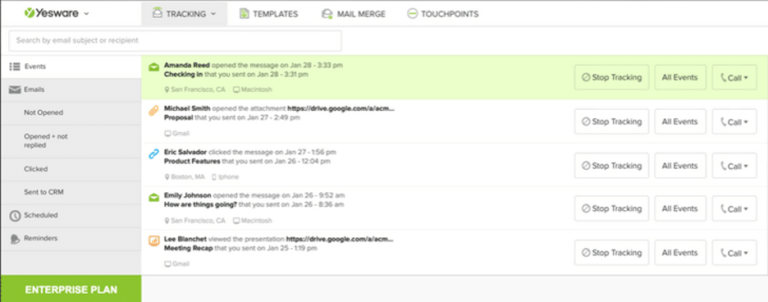
- A/B testing your subject lines and picking the winner
- See which email templates performed best
- Find out which follow-ups got a better response rate
5 Steps To Write A Cold Email That Gets A Reply
- Look for an affordable mail merge software
- Hire a bunch of virtual assistants to find as many journalists as they can
- Search on Google for email templates
- Set up the campaign and wait for the results to start rolling in
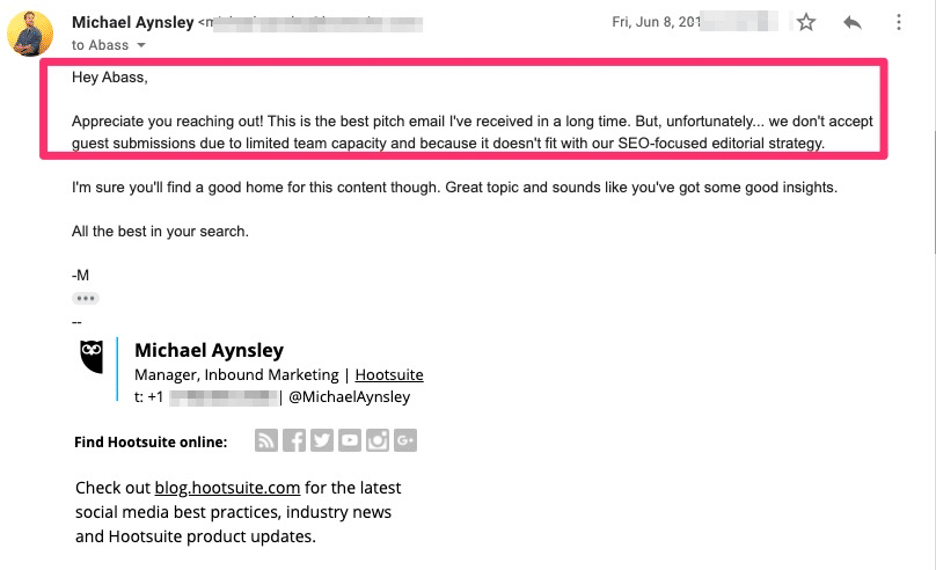
Ready to learn how to pitch content ideas successfully in an email?
Let’s go!
Step 1: Know Your Contacts Like The Back Of Your Hand
On a scale from 1 to 10, how well do you know your journalistic and editorial contacts?
Let’s be honest here: maybe 5? Maybe 3? Maybe not at all?
There’s no way around it: the better you know them, the greater chance you have of getting a reply. And that’s exactly what you want to achieve.
The goal of this step is to find a connection that helps you personalize your email so it doesn’t sound generic or spammy. Personalized emails can increase your reply rate by 100% or more.
The connection I look for is made up of two parts:
- A personal element: it could be their favorite drink, their band, a book… anything that fits
- Something notable they’ve done for their business: a big client they’ve worked with, outstanding results they’ve generated for their clients, a press mention or even a fantastic blog post they’ve published
There’s no need to overdo it and spend hours on research just for the sake of it. The goal is to sound familiar. Your journalist is less likely to speak to someone who didn’t even do a bit of homework before sending them an email.
Whatever industry you’re in, research has shown that nearly 95% of journalists are actively hanging out on social media. Most people use something that reflects their personality or the work they do on their social media bio, especially Twitter and LinkedIn. That’s where to begin your search:
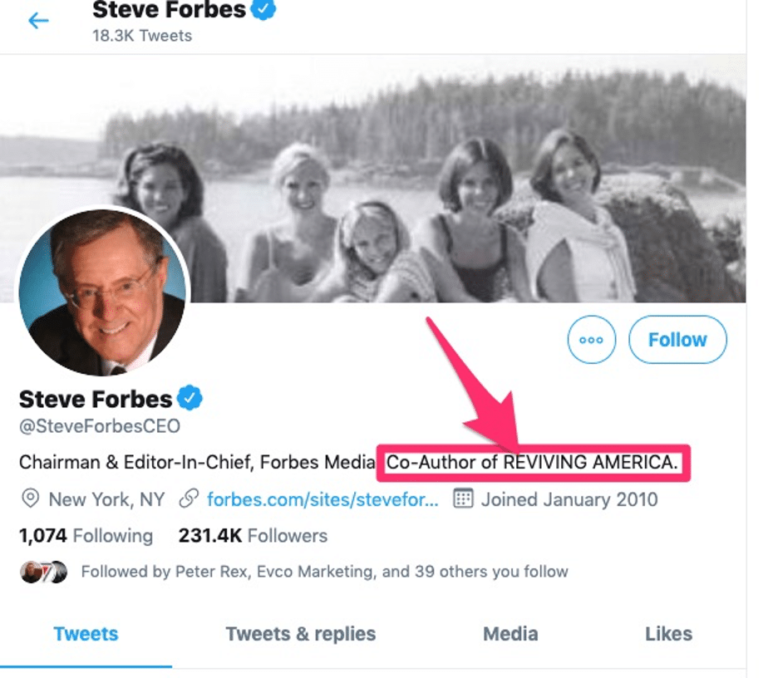
As you can see, Steve Forbes, Chairman and Editor-In-Chief at Forbes, is the co-author of a book called Reviving America. If I were to email him and mention that I have bought and read his book and cite a point/takeaway from it, he’ll know that I did my homework and trust me just a bit more. Most journalists appreciate it when you get to know them before you send your email.
People like Steve may not write about your niche. But when they like your pitch, they’ll reply and CC one of their team who can help you. And since it’s coming from Steve, you’ve nailed it.
Sometimes, you may not find anything personal on Twitter or LinkedIn, so what should you do?
Check their own website or their company’s website. You should be able to find something about them; after all, they have an “about” page for a reason:
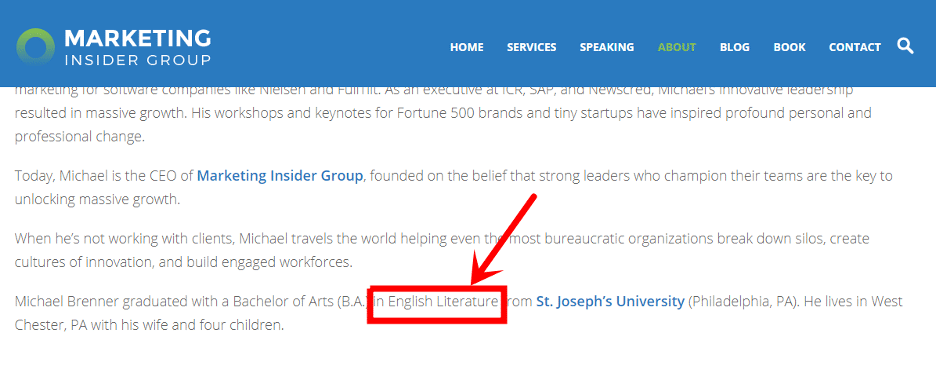
Michael Brenner, an expert content marketer, has a degree in English Literature. If you studied the same subject or attended the same school, that’s something you can use.
The second element – the business connection – is easy but many people don’t bother to do it. Let’s take Michael as an example. To find a connection, look at the company’s services and case studies pages. That’s where you’ll find results they’ve drove to their clients or clients they’ve worked with:
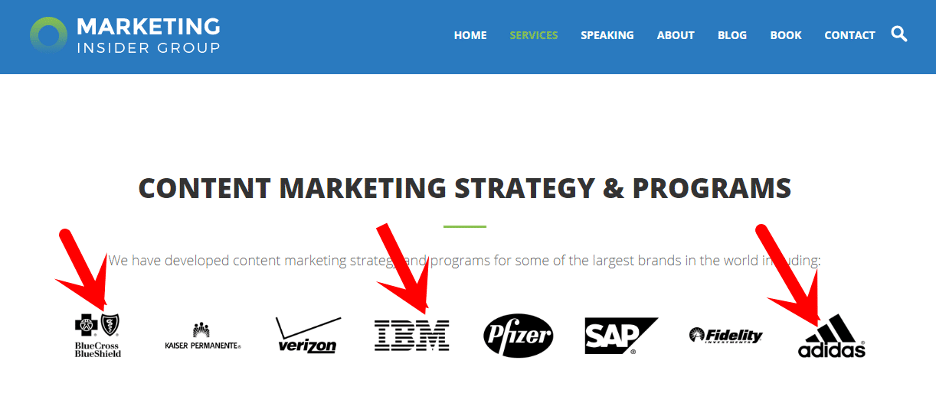
Michael has worked with some pretty amazing clients: Adidas, IBM, Pfizer, and others. This is a great connection to use in your opening.
This step will take time but consider the payoff. Would you rather send 50 generic emails and aim for a 2-5% reply rate or 50 personalized emails and get a 30% reply rate?
If I were you, I’d prefer the latter.
Remember that every email you send is an opportunity for you and your business. Don’t rush and sell content ideas short. Take the time to find a connection with every journalist, and note it for later use.
Key takeaway: When you show that you’ve put in the work to personalize your email, you’ll often get a reply even if the recipient doesn’t need your service. They’ll appreciate your effort and politely respond with “No, thanks” instead of ignoring you or marking your email as spam and consigning your message – and perhaps all future messages – to the trash.
Step 2: Write An Irresistible Subject Line
Let me ask you: how many cold inquiries do you open per day? Not many, I’ll bet, just like everyone else!
No matter how well you know your journalists, they won’t open your email if your subject line isn’t compelling. Not only that, 69% of recipients will report the email as spam based purely on its subject line. People are bombarded with spam and irrelevant emails every single day.
It’s a real challenge to hook your journalist with an irresistible subject line they can’t help but open.
Studies show that shorter subject lines work best:
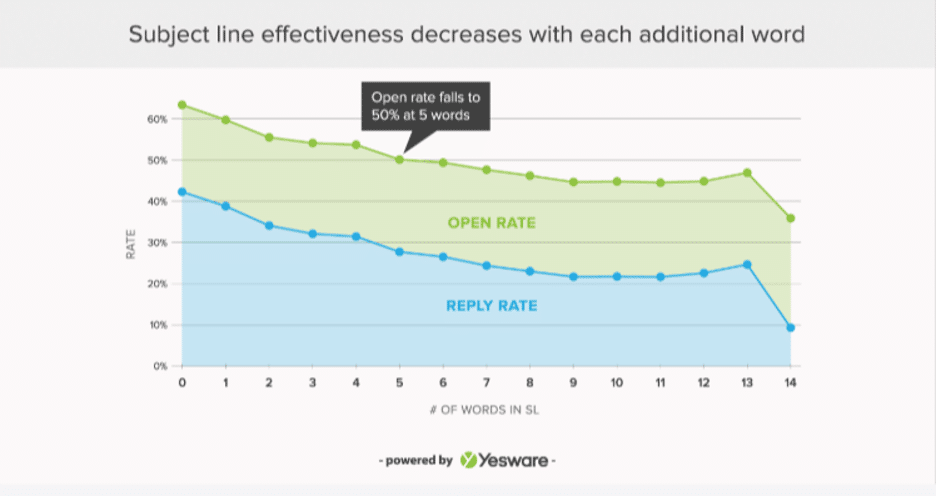
Marc Wayshak, best-selling author and sales strategist, totally agrees:
“The key to a great cold email subject line is that it fits the following criteria. One, keep it short enough to fit on the G Suite/Outlook preview (under 5 words). Two, reference the journalist’s company name (shortest version or acronym) in the subject. And finally, split test everything with open tracking (by the time you read this, the first two ideas may be obsolete, so test! Test! Test!).”
This is where your hard work in the first step comes in handy. If you were a cat lover, which one of the following subject lines would you click?
- Quick Question
- Quick Question From A Fellow Cat Lover
The latter, of course, because it looks more relevant.
So, how to write a captivating subject line?
The short answer is “it depends,” and the longer answer is what I’m going to cover now.
In addition to Marc’s advice, your subject line should perform three main functions: summarize your email, say what you want, and be action-oriented. People are too busy to spend time figuring out what you need.
Let’s say you want to land a guest post on a major publication; what subject line should you use?
Put yourself in the editor’s shoes and ask that question. That’s what I always do. But keep it short.
What do editors want? They want exclusive content that respects their guidelines. So a good subject line could be “Exclusive [your niche] article for Forbes”. Short and action-oriented.
How about this for a subject line: “Exclusive article for Forbes: How I added $30k to our MRR last week with [your area of expertise]”.
There’s an exception to the “keep it short” rule: after all, your subject line’s role is to give an overview of your email.
Simply put, think of the value you can offer the recipient to come across as a giver, not a taker; that’s how you get a foot in the door.
Recently, I wanted to promote one of my articles and, after researching bloggers I wanted to contact, I discovered that most of them hate emails that ask directly for feedback and/or a tweet. Bloggers are always on the lookout for great content to consume (the value) but I have to be a giver to get their attention, not a taker.
So, by putting myself in their shoes, I came up with this subject line: “I just published a new article but I don’t want a tweet” and it worked:

Step 3: Hook Your Journalist With A Catchy Opening
The best way to impress your contact is to start your email with a personalized opening that clearly shows you’re not a stranger.
When I asked Sujan Patel, the founder of Mailshake.com, about a good email opening, he said:
“I define a ‘catchy opening’ in an email as one that drives opens and replies. For that reason, I don’t like to get too clever about it; in my experience, the best subject lines and opening few lines of the body copy get into exactly what you’re offering and how it can help the recipient.”
In other words, avoid fancy copywriting. Tell them who you are and how you can help. Be direct.
One note before moving forward: don’t lie. Even if it’s going to impress, you’re putting your entire reputation on the line.
The reason I say that is because some people lie about universities or countries they’ve not visited, just because the journalist studied, worked, or vacationed there. Lying is doubly dangerous if your journalist is a local: they will instantly know you looked something up online to convince them to trust you… and you’ll go straight to trash.
The first step helped you uncover the connections you need to personalize your opening. It doesn’t have to be anything special. Most of the people you’re competing against haven’t done any research at all. The goal is to stand out from the crowd and increase your chance of getting the email read.
And don’t fall for the template sentence approach, such as starting with “I’m a big fan of all that you do” or ”long-time reader/follower.” Even if they’re true, they’ve become clichés.
Let’s say I wanted to email Michael Brenner, the expert content marketer from our first step. I’d start my email like this: “Hi Michael, Greetings from a fellow english literature grad. Congratulations on working with Adidas – that is impressive!”
Now you don’t sound like a spammer and you’ve proved that you did your homework. Plain, simple, and it’ll work.
Key takeaway: Take the personal connections you found in the first step and turn them into one or two sentences in the introduction of your email. You’ll increase your chances of keeping the recipient’s attention tenfold.
Step 4: Write An Astounding Email Body
After you’ve nailed down your opening, it’s time to start writing your introduction email. Things are getting exciting, aren’t they?
Here’s the vital key to the email body: it’s more about them and less about you.
After all, they don’t know you, so it doesn’t make sense to send a me-centric email to a stranger. Remember, people care only about themselves, so use that to your advantage.
To write a successful introduction email, follow this framework:
- Right after the opening, pitch content ideas in just one sentence. That’s enough to give the journalist a bit about you. An example would be: “I’m Abass Sahrawi, a B2B content marketer at Abass Media.”
- Mention clearly why you’re emailing. Remember it’s about them. Let’s say that you’re pitching them an article; a good explanation of why you’re emailing would be: “I wrote this article specifically for Forbes, following your submission guidelines, and I think it’d be a compelling read for your audience.”
Again, that’s just an example to give you an idea. You could explain further why you picked that topic, and why you think it’d be beneficial to their audience. The same can apply to pretty much anything else. If you’re trying to land a dream cover-story spot, you’ll follow the same framework but tweak a few elements to show that you’re a perfect fit and how your story or experience can inspire and enlighten their readers.
The difference between a good email and a bad one is that the good one feels like it’s written for that person specifically. Bad emails are impersonal and scream that they’ve been sent to a thousand other people.
Key Takeaway: Pitch content ideas in one sentence, then keep their attention by being direct and explaining why you’re emailing and how you can benefit them.
Step 5: Make Your Ask Crystal Clear
The goal of the past four steps is to get the journalist reading your email. That’s great, but sometimes people don’t respond – not because your email is bad, but because they didn’t understand what you want!
Trust me, it happens more than you might think. A while ago, I sent an email to a journalist following the exact four steps above… but failed to create a clear ask:
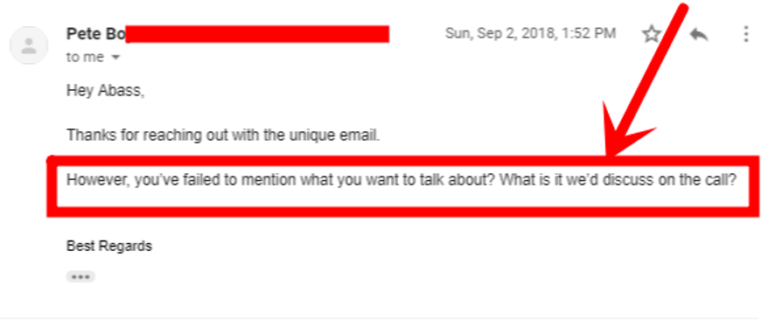
I hate complex stuff as much as you do. The ask doesn’t have to be complicated or something no one else has ever written. It should be:
- Clear: the contact should understand what you want them to do.
- Specific: journalists should know exactly what to do, in concrete terms: schedule a call,feature your content, put you on the cover, or whatever your goal is.
- Simple: the journalist must be able to act in a single step. You may want them to read your article, but the first step is to get them there – the rest is in the document, not in the CTA.
Humans forget quickly. A journalist may think that they’ll get back to your email later today, then get caught up in a crisis and forget you forever. Keep your ask clear, specific, and simple.
Let’s look at how to write a good CTA for our feature article:
- If you want to be a contributor and you didn’t attach the article in the email, ask them if it’s okay to send the document for review, to see if it’s a perfect fit.
Here’s an example: “Let me know if I can send over my article for you to review it.” - If you’ve sent the article in the email, you can ask for their opinion and to let you know if they want changes – you’re totally ready to adjust your work accordingly.A good example would be: “My article is attached for you to review. Feel free to make any editorial changes that you see fit, or let me know if there is anything else you need from me.”
The same applies to any ask: state clearly what you want the recipient to do next.
Key takeaway: Don’t make a big deal out of it or use a salesy CTA. Your ask should be tied tight to what you want the journalist to do. A reply, a review, schedule a call, whatever. In every case, tailor your ask to your email body.
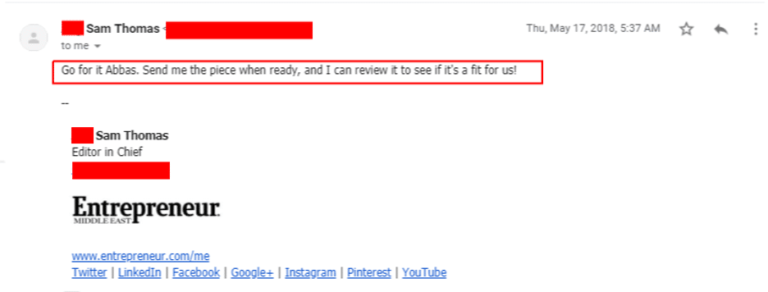
Mastering how to write a killer email will increase your chances of getting published and featured. However, if you’re not keen on using email, you can use Twitter and HARO.
How To Use Twitter And HARO To Get A Reporter To Write About You
What we covered in the past section is very important. Knowing how to write a personalized email is a must because pitching journalists using HARO and Twitter is no different.
That said, let’s get you even more mentions through HARO.
How To Make The Most Out Of HARO
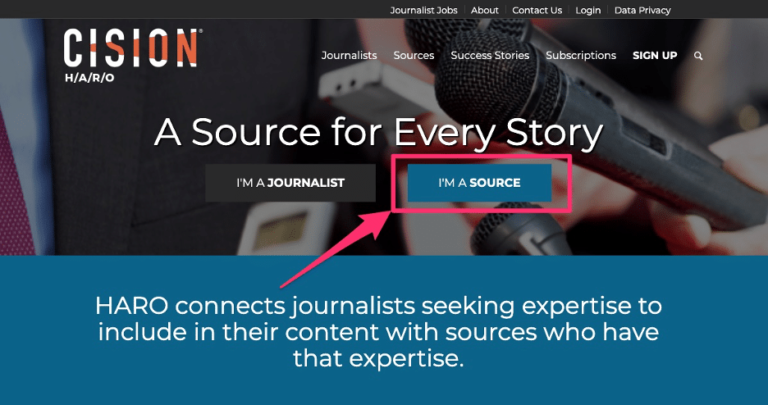
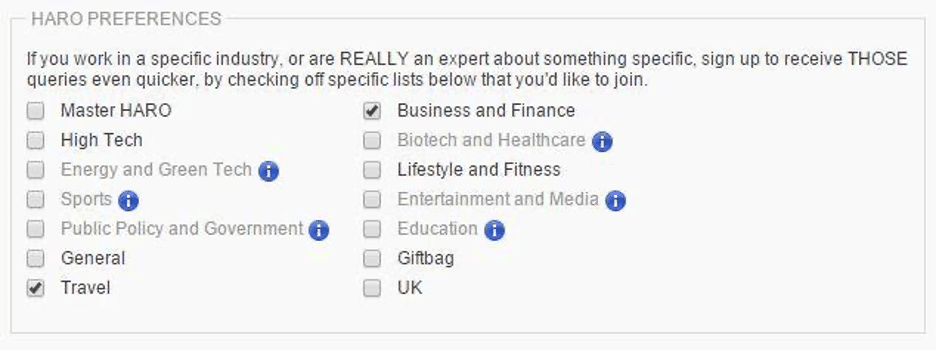
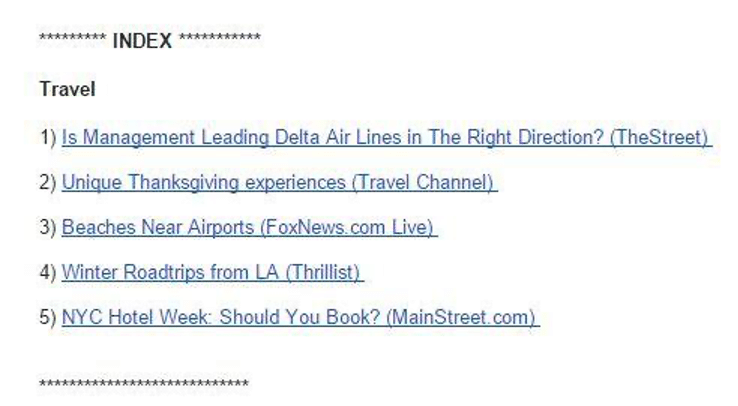
When you click a link that matches your domain of expertise, you’ll see a request for help with an anonymized reply address (to reduce spam):
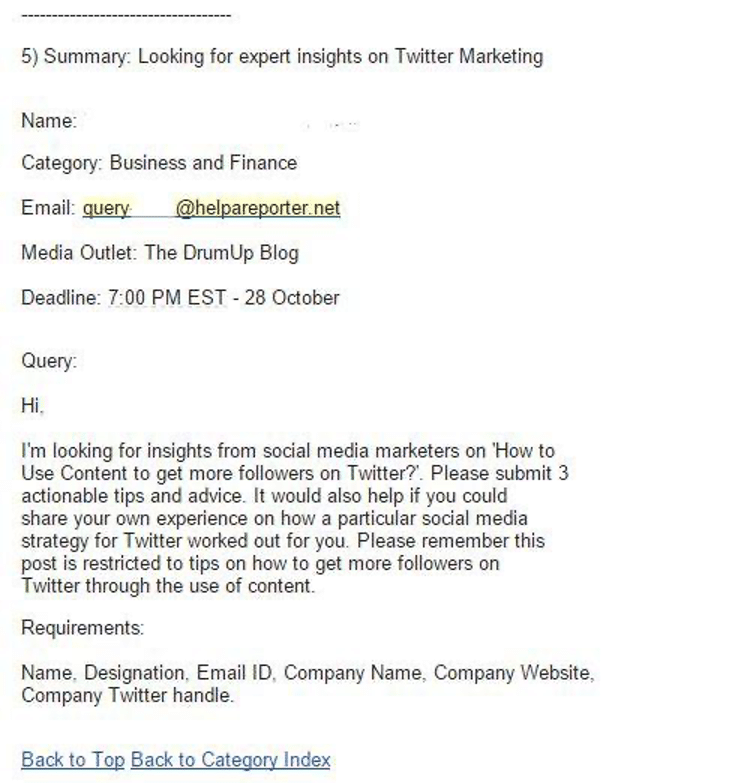
Never follow up with a HARO reporter. They’re just looking for the best information to include, so send your pitch and move on.
However, when one of your dream publications pops up on the list of queries, you can still pitch by using HARO as a launchpad:
- By logging in to your account to respond, or
- By directly sending an email to a reporter’s anonymized address in the query
And here’s a perfect pitch email by Brigitte Lyons that you can tweak and use any time you stumble across a life-changing opportunity:
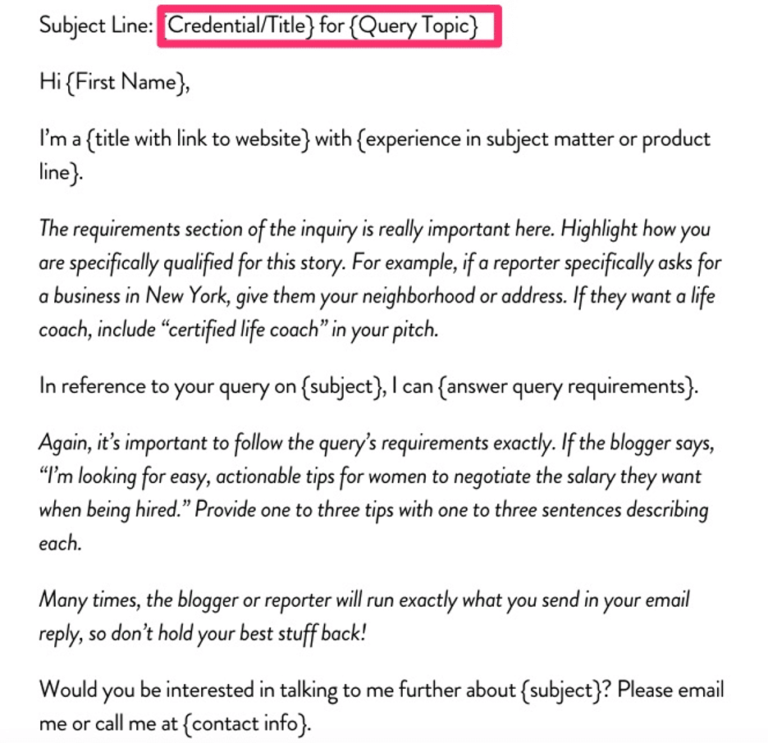
How To Use Twitter To Pitch Journalists And Reporters
A quick and easy way to build a list of journalists to pitch on Twitter is by using a simple tool like BuzzSumo.
For example, here I used their Twitter finding tool to locate journalists who write for Forbes:
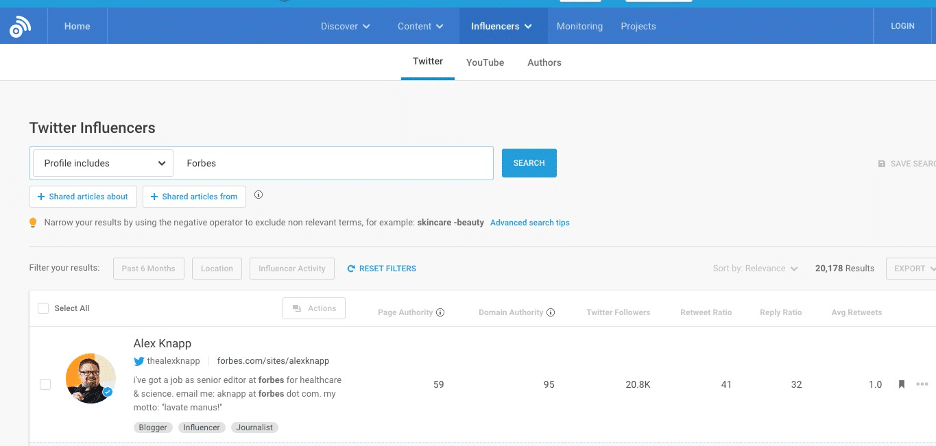
Let’s Tell Your Story: Here’s How We Can Help You To Get You Featured On Forbes, Or Inc.
- You’re a successful entrepreneur.
- You run a 7-figure business (at least). You want us to target publications that will make you instantly recognisable and supercharge your reputation? You really need a very successful business.
- There’s something unique about you or your story. Readers are constantly bombarded with stay-at-home moms/dads who’ve built successful businesses. We need something different that relates to your own unique problems and means you stand out.
Wrap-Up: You Have Everything You Need To Get Featured In Your Favourite Publication
- Forbes, Inc. and other high-caliber publications are a credibility builder.
- There are multiple ways to get featured. However, pitching your story the right way, being a contributor, or just simply hiring us to do it for you, are the best options.
- Journalists wake up every single day looking for interesting stories and exclusive research. Use that to your advantage.
- Find the right journalists/reporters who cover your niche and pitch them. Remember, be very picky who you pitch.
- Be very careful and write only personalised pitches that’ll make you stand out. Stay away from templates you find on Google; they’ve been used to death.
- Twitter and HARO are goldmines. Use them correctly to get reporters to write about you.
Abass Sahrawi
Abass Sahrawi is a SaaS & B2B conversion content writer who does the work. He creates impeccable, research-driven cornerstone that targets your ideal customers, builds authority, and raises online revenue.
Rhonda Swan
Rhonda Swan is an International Speaker, Best Selling Author, Personal Branding and Business Strategist. Rhonda is the CEO and Founder of the Unstoppable Branding Agency where she works alongside visionaries, experts, entrepreneurs, and businesses that go from being the world’s best known secret, to the world’s best-known expert with PR, Media and Expert Branding.
